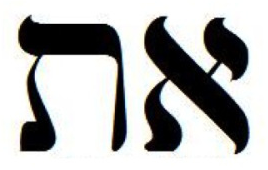These demure humming boxes contained the densest working out, the highest tide of everything that collective ingenuity had yet learned to pull off. It housed the race’s deepest taboo dream, the thing humanity was trying to turn itself into.
Richard Price, Plowing the Dark
Here are the four questions that the concept of telepathy helps me answer:
1. Where we are: Our desire for telepathy tells us what we are turning ourselves into: truly intersubjective beings, transmitting pure thought, sensation, and experience to each other instantaneously, without mediation or translation. Artificial intelligence, virtual reality, creating artificial humans, finding alien life, colonizing other planets. Telepathy. These are the science fiction dreams that actually seem to propel billion or trillion dollar worldwide industries. But all of them seem to lie just out of reach, beckoning us. We’re always so close. We’re always not quite there, like Zeno’s Paradox, closing the gap but never reaching our target. Seeing all communication as telepathy tells us something about what it means to be human, maybe a little about what it means to be a living thing at all. My dog is barking, the bees are dancing, the trees are reading each other’s chemical minds. To be alive seems to be to aspire to telepathy.

2. What happened? If we use the dream of telepathy as a lens to look back, it helps us understand our history. Older communications technologies – the alphabet, printing press, radio, TV, and the Internet, were revolutions in telepathy, coming with increasing speed through the centuries and now decades, driving us to this ideal: getting experience and thought to pass from mind to mind. Each came with new hopes, new ways of interacting and defining ourselves, and new gods.
3. What comes next? This trajectory helps us map what will come next: Technologically Mediated Telepathy (TMT), or brain-to-brain experiences through the computer, aided by AI.
4. How to really read: This is minor but it is dear to my heart as an old literature professor: Telepathy implies a way of reading. Reading telepathically means really trying to find out what the author is thinking and intending before finding confirmation of my own bias or theory in the text. They should teach it in every literature class: how to read beyond ideology. Reading is an act of intimacy between the author and me. It comes with a certain responsibility that accompanies all acts of conjugation. I submit to entering and being possessed by another’s mind. When a writer sits down to write in good faith, even the most profane, they are writing a form of liturgy. And I should try to read faithfully, in good faith, like a prayer, beyond prejudice. Every time we try to make ourselves understood or try to understand another, there is a divine hope.
******
About Me:
I’m the author of The Soft Machine: Cybernetic Fiction (Methuen/Routledge), Rope Dances (short stories, The Fiction Collective); A Short Guide to Writing About Science, (HarperCollins & Pearson) and other books, as well as reviews, essays, blogs, fiction, plays, and articles. For 21 years, I was a professor of literature and media at William & Mary and then at Rensselaer. I am also the former CEO, co-founder and executive of several e-learning companies and programs at universities, non-profits and the private sector.
Inspired by the launch of the World Wide Web with the Mosaic browser, I originally explored versions of this material during a sabbatical year as a Fulbright scholar at the Technion in Israel (1993-94). I indulgently took it up with a doctoral class in literature at Rensselaer in 1994. I am indebted to them for their skepticism and indulgence of these “porushian studies,” as they mockingly called my rants, and with good reason. Though wisdom be eternal, cleverness is fleeting, and probably narcissistic.
I published a short version of the larger project appeared here in Mots Pluriels, an Australian journal. Some of it showed up in bits and pieces in numerous dense publications (e.g. “Hacking the Brainstem: Postmodern Metaphysics and Stephenson’s Snow Crash” in Configurations, a Johns Hopkins University journal.) I am most recently grateful to Jason Silva who both resurrected my work and my interest in it by meeting me in San Francisco and then mentioning it in one of his ecstatic video posts “The Urge to Merge.”
I thank my many Talmud teachers and classmates past and present, who often served as the first, suffering audiences, saved me from much foolishness, and have immeasurably enriched my life and thinking. I am especially grateful to my wife, Sally, for her deep and abiding forbearance, to my children, and to my granddaughters for gazing into my eyes for long minutes, even as babies, with questions I can’t answer.
I am inviting you to get lost in this labyrinth, dear telepath, and if you have the time, like a fellow spider in this web, drop me a sticky line at dporush@yahoo.com.



You must be logged in to post a comment.